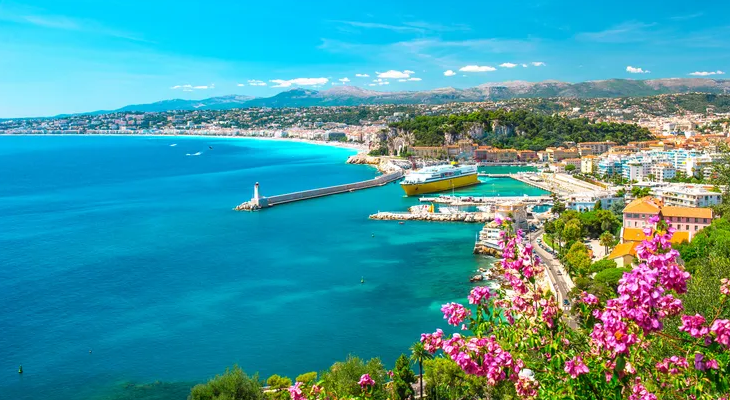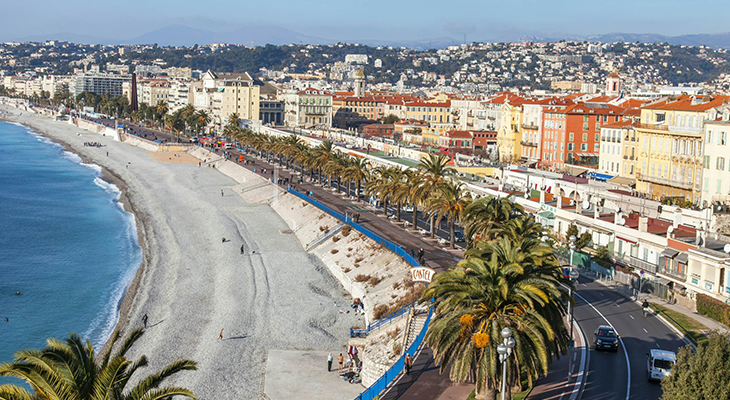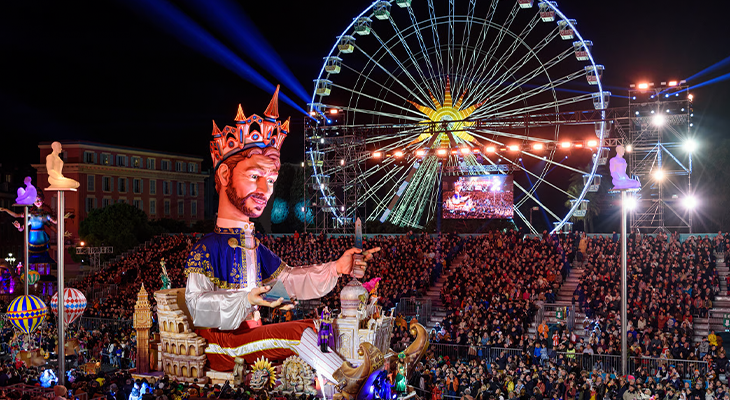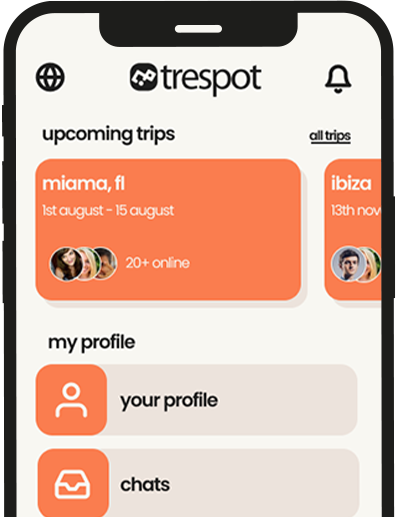Best Time to Visit Nice (Weather, Events & Crowds)

Choosing the best time to visit Nice depends on what you want from the Côte d’Azur’s sun‑splashed capital—beach days, festival energy, market strolls, or crowd‑free museum time. Most experts steer travelers toward late April–June and September–October, when Mediterranean warmth, long evenings, and softer prices intersect. Summer (July–August) brings the hottest days, the liveliest promenade, and blockbuster events like the Nice Jazz Festival, but also higher rates and thicker crowds. Winter is milder than much of Europe and adds Christmas markets and the Nice Carnival—a spectacular two‑week burst of parades and confetti—so city breaks feel festive even when the sea is cold. This guide blends official climate data, event calendars, sea‑temperature norms, and on‑the‑ground logistics to help you match your month to your travel style. Whether you’re a swimmer eyeing August water temps, a culture‑seeker timing spring exhibitions, or a value‑hunter targeting November hotel deals, you’ll find clear recommendations, neighborhood picks, and smart itineraries—plus insights on evolving heat patterns and “tropical nights” that can influence comfort in peak summer.
Table of Contents
- Quick Answer & How to Choose
- Nice Weather & Microclimates (Promenade to Hills)
- Season‑by‑Season Guide
- Month‑by‑Month Snapshot (Jan–Dec)
- When the Sea Is Warmest (Swimming & Water Sports)
- Events & Festivals That Move Prices
- Crowds, Costs & Booking Strategy
- Active & Cultural Nice (Hiking, Museums, Cuisine)
- Neighborhoods & Base Choices by Season
- 2 Sample Mini‑Itineraries (48–72 hours) by Season
- Climate Trends & “Tropical Nights”
- Quick Takeaways
- Conclusion
- FAQs
- References
Quick Answer & How to Choose
If you want a high‑probability win on weather and manageable crowds, aim for late April–June and September–October. These months line up with expert picks and provide warm, bright days without July–August’s peak congestion. July–August is perfect for beach‑first travelers who want long, hot days and festival buzz; just book early and expect higher prices. December–February is mild by European standards and great for markets, museums, opera, and the Carnival spectacle.
- Beach & nightlife: June–September (warmest seas in August).
- Culture & calmer streets: late Apr–June or Sept–mid‑Oct (sweet spots).
- Festive city break: December (markets) and February (Carnival).

Nice Weather & Microclimates (Promenade to Hills)
Nice’s Mediterranean climate means hot, dry summers and mild, wetter winters. Average highs crest in August (about 27 °C / 81 °F), while January lows hover near 5 °C / 41 °F. On average, “beach/pool” conditions are strongest from late June to late August. Along the coast (Promenade des Anglais), breezes moderate daytime heat, but humidity can make evenings feel warmer. In hillside neighborhoods like Cimiez or the Observatory ridge, you may find slightly cooler nights and more shade.
Rain is most likely from autumn into winter, with November often among the wetter months—helpful to know if you’re planning hikes or balcony dining. Even then, Nice still clocks impressive sunshine compared with many European cities. For day‑to‑day planning, rely on local forecasts and climate normals.
Why this matters: A June afternoon at Castel Plage can feel beach‑perfect while a stroll up to Colline du Château catches a cooler breeze—micro‑choices (shade, altitude, sea proximity) can noticeably improve comfort in peak months. (Think morning beach, shaded museum mid‑day, golden‑hour promenade.)
Season‑by‑Season Guide
Spring (Mar–May): terraces return, festivals wake
Spring brings café terraces back to full swing, longer days, and increasing sunshine. Late April–May is often the sweet spot: warm enough for al‑fresco lunches, wisteria‑draped lanes in Vieux‑Nice, and fewer crowds than summer. Many guides across the board cite spring (and autumn) as the best time to visit Nice thanks to comfortable temperatures and more approachable prices. Do note that May includes public holidays in France and major Riviera events (e.g., Cannes Film Festival) that can ripple into Nice availability—book early if your dates overlap.
May’s sweet spot vs. May holidays
Expect great light for photography, active markets on Cours Saleya, and first swims for hardy travelers toward late May; sea temperatures are warming but not at summer peak. If your dates coincide with big regional events, anchor key dinner and museum tickets ahead of time and consider basing slightly off‑center (e.g., Musiciens/Carabacel) for value.
Summer (Jun–Aug): beach‑perfect, festival‑heavy
June already feels summery with long daylight; by July–August, beaches brim with life, and nights thrum with music. Nice Jazz Festival in July is a headline fixture, drawing international names and travelers. Expect higher hotel rates and restaurant reservations to be essential. Sea temps reach their annual peak in August (~24 °C), prime for long swims and paddle sessions. If you’re crowd‑averse, time beach visits early or late and save museum hopping (Matisse, Chagall) for the hottest hours.
Unique insight: In recent summers, “tropical nights”—when temperatures don’t fall below 20 °C—have become more common in Nice. Choose air‑conditioned lodgings and shaded, ventilated dining spaces if you’re sensitive to warm nights.
Autumn (Sep–Nov): warm seas, harvest vibes
For many, September is the best month: sea still warm, crowds easing, and golden evenings perfect for rosé on the Promenade. October offers comfortable days for day trips (Villefranche, Èze, Antibes), though rain risk increases later in the month. Several expert sources and tour operators advocate Sept–mid‑Oct for balancing warmth and space, with competitive rates compared to midsummer.
Winter (Dec–Feb): markets, Carnival, mild city breaks
While the sea is brisk, Nice’s winter is relatively mild—daytime highs frequently in the low‑mid 50s °F / ~11–13 °C—making it a pleasant base for museums, markets, and meals. December brings pretty lights and Christmas chalets; February lights up with the Nice Carnival, a two‑week city‑wide celebration with day/night parades and the famed flower battles. Value travelers and digital nomads will appreciate lower hotel prices and a slower local rhythm.
Month‑by‑Month Snapshot (Jan–Dec)
- Jan–Feb: Mild days for Europe; Nice Carnival typically mid‑Feb–early Mar (check the year’s program). Good for budgets and culture days.
- Mar: Spring stirs; terraces revive; still‑cool sea. Nice for walkers and museum buffs.
- Apr: Longer days, blossom, rising temps; a favorite shoulder‑season month before summer pricing.
- May: Café life in full swing; watch for French holidays & regional events; sea warming.
- Jun: Peak beach rhythm begins; still less crowded than late July; great for swimmers and sundowners.
- Jul: Nice Jazz Festival + busy beaches; book lodging and key tables.
- Aug: Hottest, busiest, warmest sea (~24 °C); some small shops close for holidays; plan shade breaks.
- Sep: Best all‑rounder for many—warm water, softer crowds, clear evenings.
- Oct: Comfortable for day trips and hiking; rain risk ticks up late month; decent values.
- Nov: Quiet, cultural; wetter; good hotel deals and museum time.
- Dec: Markets and lights; mild city break; opera season and cozy bistros.
When the Sea Is Warmest (Swimming & Water Sports)
If your Nice plan centers on swimming, target late June–September, with August the peak for water warmth. Historical sea‑temperature norms show ~24 °C in August and ~22–23 °C in July/September—perfect for long swims, SUP, or snorkeling at Coco Beach and Villefranche‑sur‑Mer nearby. By contrast, March–April waters hover closer to ~13–15 °C, which is brisk without a wetsuit. For shoulder‑season swimmers, September is a stellar compromise: post‑summer calm with warm water and cooler nights for sleep.
Wind and swell vary with fronts; mornings often bring calmer water along the Promenade and Castel Plage. Plan cliff‑path swims or kayak sessions early, save art museums (MAMAC, Matisse) or shaded markets for midday, then return for a sunset dip. If you’re sailing or boating, late summer offers the broadest rental choice, while June and September give you decent availability minus the fiercest crowding.
Events & Festivals That Move Prices
- Nice Carnival (February): France’s premier winter carnival fills squares and the Place Masséna stands with day and night parades and famous flower parades. Expect fuller hotels near parade routes and plan seating early.
- Nice Jazz Festival (July): One of the oldest jazz festivals in the world (launched 1948) and now held each July; 2025 edition runs 24–27 July with two stages and big‑name lineups. Book lodging and restaurants far in advance.
- Christmas markets (December): Seasonal chalets and light displays return each year, adding a festive layer to mild winter days. Pair with day trips to Monaco or Antibes for seaside lights.
- Sports & others: Ironman events in June and the Marathon des Alpes‑Maritimes (Nice–Cannes) in autumn also affect availability. If you’re not attending, avoid arrival on race weekends or base a few blocks inland to escape closures.

Crowds, Costs & Booking Strategy
Peak vs. shoulder vs. low season: Prices and crowds climb notably from late June through August; shoulder windows (late Apr–June, Sept–Oct) offer a more balanced experience. If your dates fall in July–August, lock accommodations early and consider weekday arrivals for better rates.
Day‑trip ripples: Nice sits between major event magnets—Cannes Film Festival (May) and the Monaco Grand Prix (late May/early June depending on year)—which can spill over into Nice’s prices and train crowding even if events occur 30–40 minutes away. If you plan a spring trip, check those calendars and adjust. (When in doubt, hold cancellable rates until schedules are set.)
- Reserve parade seats and Jazz Fest nights early or choose a week just before/after the events for vibe without peak rates.
- For hot spells, prioritize AC and east‑ or north‑facing rooms (cooler afternoons); “tropical nights” have made AC more than a luxury in high summer.
- Restaurants: prime seafront spots book out on weekends year‑round—shoulder season still benefits from reservations.
Active & Cultural Nice (Hiking, Museums, Cuisine)
Shoulder seasons are superb for hiking (Mont Boron, Cap de Nice, Sentier du Littoral toward Villefranche) and cycling the Promenade. Temperatures favor long walks in April–May and September–October, when humidity and heat are lower. Museums (Matisse, Chagall, Fine Arts) shine as midday cool‑downs in summer and anchors for winter city breaks.
Food‑wise, the market at Cours Saleya runs year‑round (closed Monday for antique day), with socca stalls, salade niçoise, and local rosés always in season. Autumn’s harvest months bring fuller wine lists (Provence and nearby Liguria) and truffle menus inland. For the Nice Jazz Festival, consider early dinners inland (Libération, Musiciens quarter) to avoid the old‑town crush. Event calendars from the official tourism board help you plan neighborhood‑by‑neighborhood.
Unique insight: Even on a beach‑trip itinerary, a museum‑at‑midday rhythm in summer lets you enjoy both culture and comfort—beat the heat indoors, then return for 6–8 pm swims when the light is golden and crowds thin.
Neighborhoods & Base Choices by Season
- Vieux‑Nice & Seafront (Promenade/Cours Saleya): Best for first‑timers who want energy and proximity to the beach. Peak seasons (July–Aug; Carnival) can be loud and premium‑priced; spring and autumn are goldilocks.
- Musiciens / Carabacel / Libération: Walkable, excellent eateries, and better value in all seasons; good base during big events (Jazz Fest, Carnival) to escape the densest foot traffic.
- Cimiez / Rimiez (hills): A touch cooler at night, near Matisse and Roman ruins; great for summer travelers sensitive to heat or for festival weeks when central prices surge.
Day‑trip logic by season:
- Spring/Autumn: Èze village, Antibes ramparts, Cap‑Ferrat coastal paths.
- Summer: Boat trips (Villefranche/Cannes islands), early swims at Coco Beach; late dinners back in Nice.
- Winter: Museums loop (Nice–Antibes Picasso) + market/coffee culture; Carnival parades in the evening.
2 Sample Mini‑Itineraries (48–72 hours) by Season
Itinerary A — Shoulder Season (late May or September)
- Day 1: Old Town breakfast → Matisse Museum (midday cool‑down) → golden‑hour swim at Castel Plage → dinner in Libération.
- Day 2: Morning train to Villefranche‑sur‑Mer (harbor stroll, swim) → back to Nice for rooftop apéro → opera or jazz bar.
- Day 3: Mont Boron hike → lunch at Cours Saleya → coastal tram to the port for sunset. (Why this timing? Warm sea, softer crowds, ideal walking temps.)
Itinerary B — Winter City Break (Dec or Feb)
- Day 1: Colline du Château views → Modern Art Museum (MAMAC) → lights and mulled wine at the Christmas chalets (Dec) or Carnival parade (Feb).
- Day 2: Day trip to Antibes (Picasso Museum) → back for seafood on the port; quiet evening stroll along the Promenade.
- Day 3: Cours Saleya antiques Monday or flower market → Chagall Museum → cozy bistro in Carabacel. (Why winter? Lower prices, mild days, big events without beach crowds.)
Climate Trends & “Tropical Nights”: What Travelers Should Know
Recent reporting highlights a rise in “tropical nights” across France (minimums > 20 °C), with Nice seeing record runs in 2024. The warm Mediterranean can keep nights muggy after hot days, especially in July–August. What to do: book accommodations with air‑conditioning, request shaded balconies, and plan sightseeing early/late with midday museum breaks. If you’re sensitive to heat, consider June or September for beach trips; or come in spring/autumn for outdoor comfort with fewer crowds.
Quick Takeaways
-
Best overall: late April–June and September–October for warmth, light, and fewer crowds.
-
Warmest water: August (~24 °C), with strong swimming July–September.
-
Peak buzz & prices: July–August (book early; secure AC).
-
Great winter city break: December lights & markets; February Carnival spectacle.
-
Event watch‑outs: Nice Jazz Festival (Jul); regional Cannes/Monaco events can raise Nice prices in May–June.
Conclusion
There isn’t a one‑size‑fits‑all answer to the best time to visit Nice—there’s the best time for you. If your ideal trip blends long seaside walks, terrace dinners, and easy reservations, choose the shoulder seasons: late April–June and September–October. You’ll enjoy warm days, late sunsets, and a calmer Old Town, with sea temperatures that are swimmable by June and still inviting in September. If you crave festival energy, aim squarely at July for the Nice Jazz Festival (and reserve well ahead). August delivers the warmest water, but pair it with smart heat management—AC lodging, shaded lunches, and early/late swims. For culture‑first travelers and value seekers, winter turns Nice into a gentle, festive city break: Christmas markets and Carnival brighten mild days when beaches are quiet.
Think about your priorities—beach time, events, budget, or elbow room—then map them to the season that fits. Use the month‑by‑month notes, event calendars, and neighborhood pointers here to lock the dates and book the essentials in advance. When you’re ready, jump into the Trespot France / Côte d’Azur chats to compare itineraries, split transfers to nearby hill towns, and crowdsource the best socca stalls. See you on the Promenade.
FAQs — Best Time to Visit Nice
1) What is the absolute best month to visit Nice for most travelers?
September—warm sea, softer crowds, golden evenings—often tops the list. Late May–June is a close second for spring freshness.
2) When is the sea warm enough to swim?
From June through September, with August the warmest (~24 °C). Shoulder‑season swimmers love September for warmth without midsummer bustle.
3) Is Nice good in winter?
Yes. Expect mild days (often low‑mid 50s °F), festive Christmas markets, and the spectacular Nice Carnival in February. Great for museums and value stays.
4) How do big regional events affect Nice?
Cannes Film Festival and the Monaco GP (late May/early June depending on year) can raise prices/occupancy in Nice, even if you’re not attending. Hold cancellable rates until dates are set.
5) I’m heat‑sensitive—what months should I avoid?
If warm nights bother you, avoid late July–August when “tropical nights” have become more frequent. Pick June or September instead.
Was this guide useful?
Tell us which month you’re targeting and why (beaches, Carnival, Jazz Fest, museums, budget)—we’ll reply with a custom 3‑day Nice micro‑itinerary tuned to your dates. And don’t forget to join the conversation in the Trespot France / Côte d’Azur rooms to coordinate day trips and restaurant picks.
Question for you: Are you visiting Nice for warm‑water swims, festival nights, quiet culture, or great value? Drop your answer below so others can connect with you.
References
- Lonely Planet — Best time to visit Nice
- U.S. News Travel — Best Times to Visit Nice
- WeatherSpark — Average Weather in Nice
- Météo‑France — Climat Nice (normals)
- Explore Nice Côte d’Azur — Major Events
- Nice Carnival — Official Site
- Nice Jazz Festival — Official Site
- Weather‑and‑Climate — Sea Temperatures (Nice)
- Condé Nast Traveler — Essential Guide to Nice
- Time Out — Best Things to Do in Nice


